On a recent camping trip to the central Oregon coast, we went on hike like we usually do, and came across what we believed to be salal berries! I snapped a few photos, then double checked my guidebooks when we got back to camp, and discovered that they were, in fact, salal berries. We decided to stop back by that trail before we headed home, so that we could collect some of these tasty berries. Foraging for salal berries is easy, at least for those of us on the west coast. They are abundant, fairly easy to recognize, and even medicinal as well as edible!
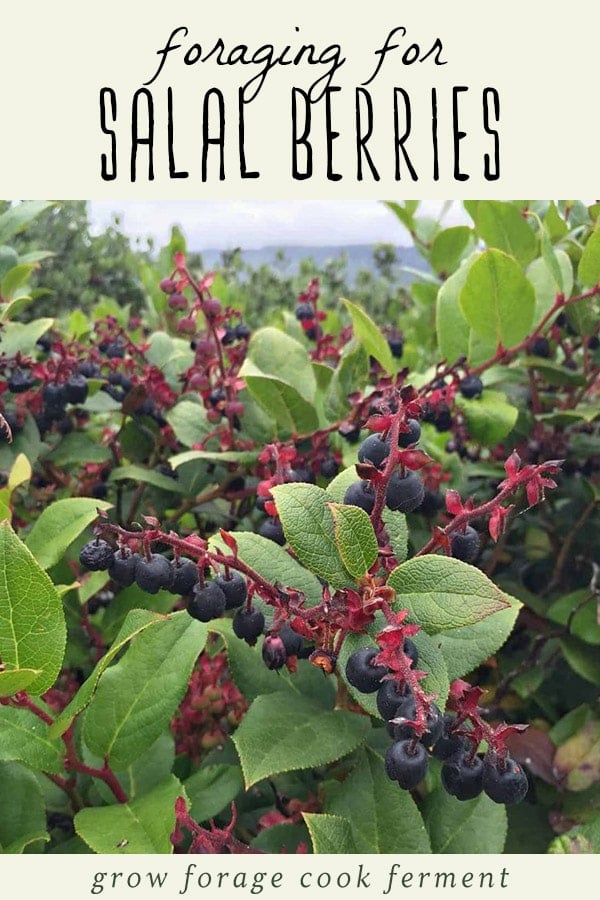
Want to save this post for later?
Wildcrafting Weeds
If you want to learn more about the edible and medicinal weeds that surround us and how to use them, check out my eBook: Wildcrafting Weeds: 20 Easy to Forage Edible and Medicinal Plants (that might be growing in your backyard)!
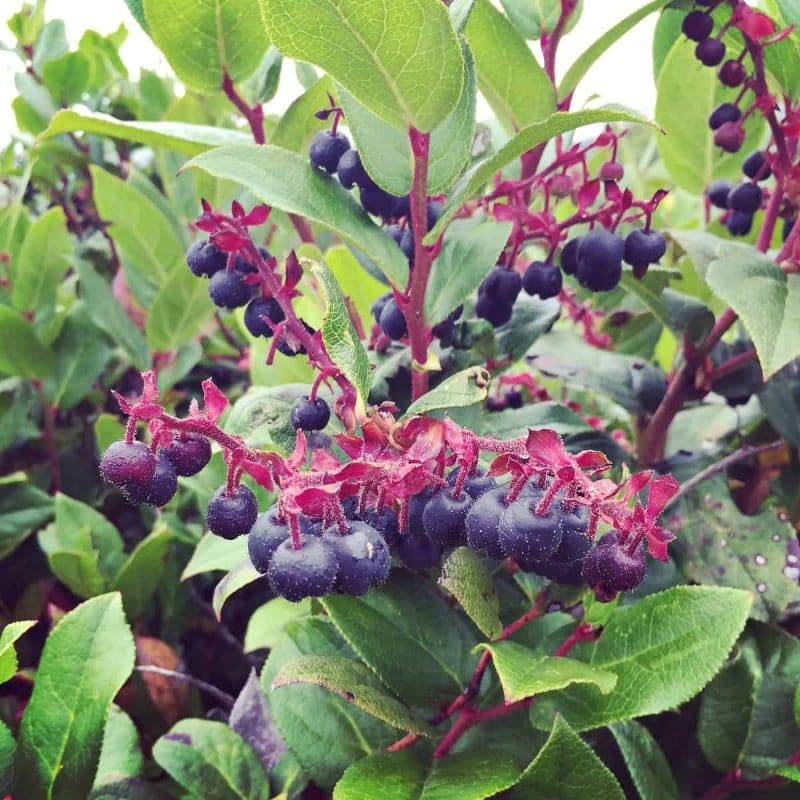
Foraging for Salal Berries
Salal (Gaultheria shallon)is an evergreen shrub native to western North America, although there is an eastern variety more commonly known as American wintergreen, or “teaberries.”
However, from what I’ve read, they aren’t all that similar, as salal berries taste a bit like blueberries and teaberries taste, well… like wintergreen.
Salal often grows in large thickets in coastal areas, which is exactly what we found! There were so many berries, we did not feel bad taking a small bucket full.
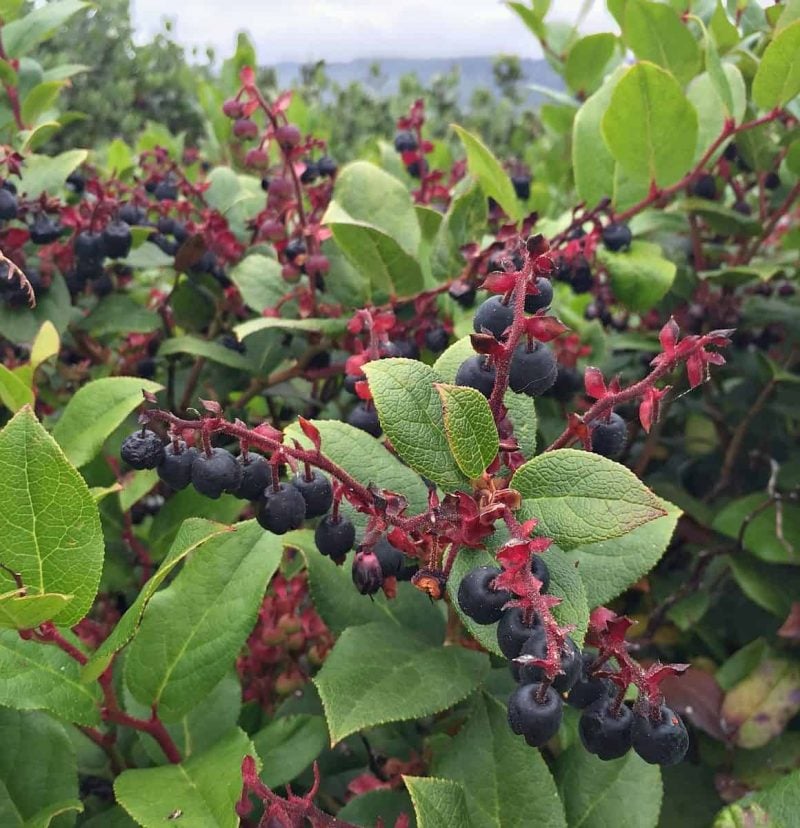
Harvesting Salal Berries and Leaves
Salal berries do not come off easily, even when they’re ripe, so it’s best to cut them off in bunches and process them once you get home.
The leaves are also highly medicinal, so it’s a good way for you to harvest both berries and leaves at the same time.
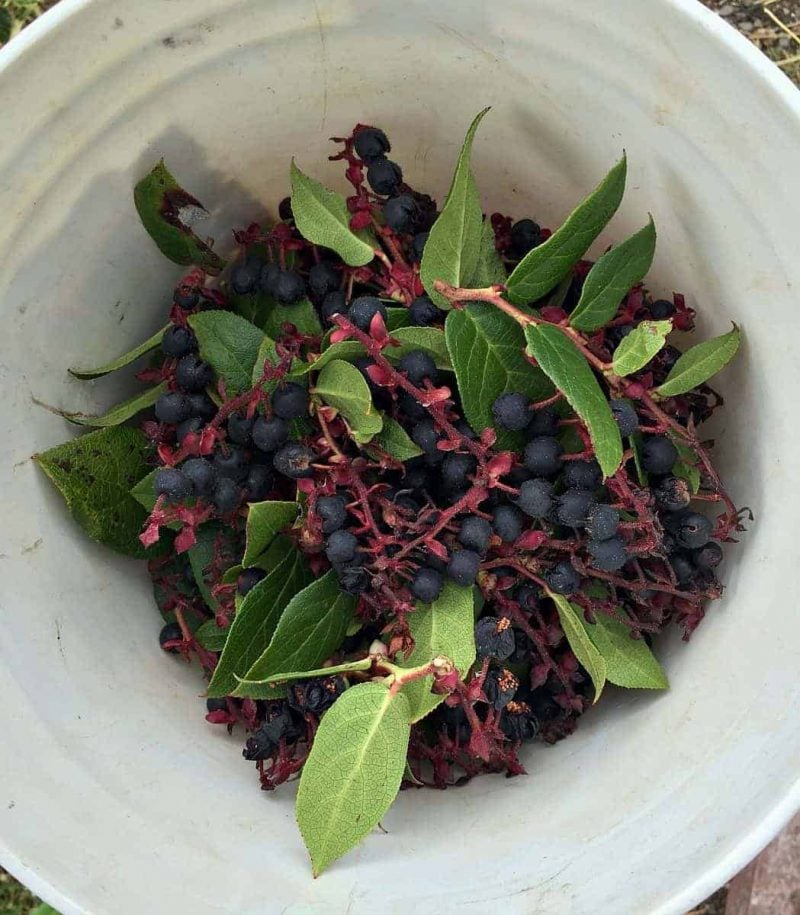
I found it easiest to use scissors to cut the berries off a bunch at a time. I put the berries into a bowl and the leaves onto a drying screen.
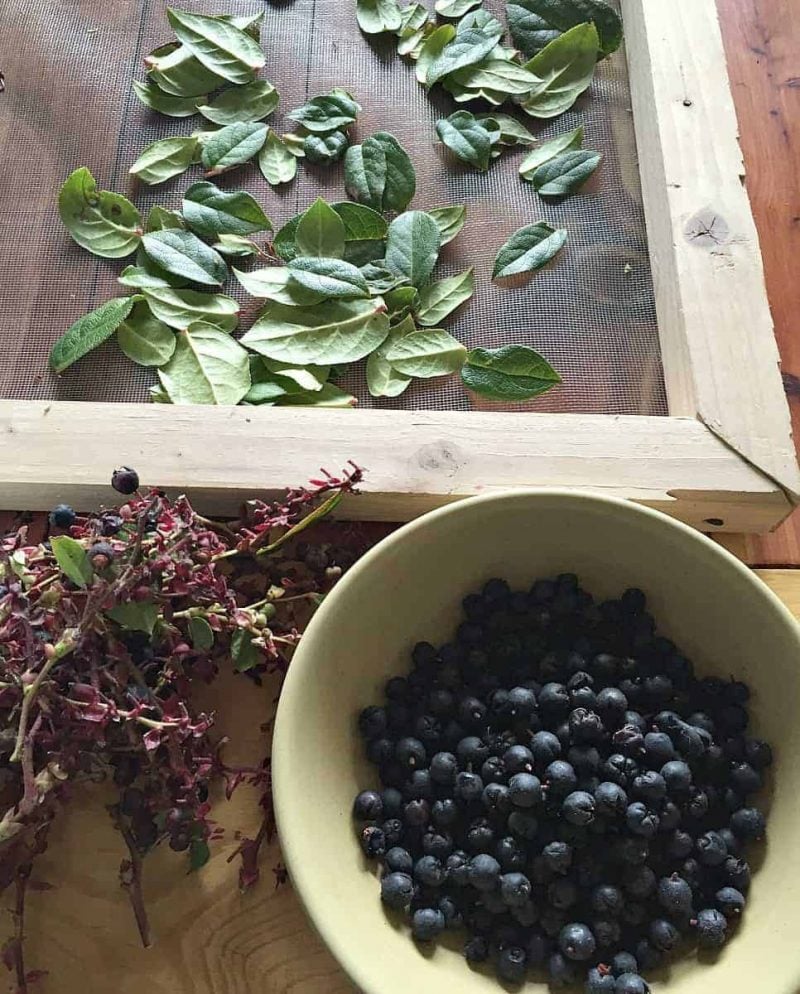
How to Use Salal Berries and Leaves
Salal leaves are astringent and anti-inflammatory. They have historically been used medicinally by Native Americans for a range of things, including respiratory ailments, digestion, and as a poultice.
When made into a tea it can safely be taken for repeated doses if need be, according to the book Medicinal Plants of the Pacific West by Michael Moore (an awesome book, I might add).
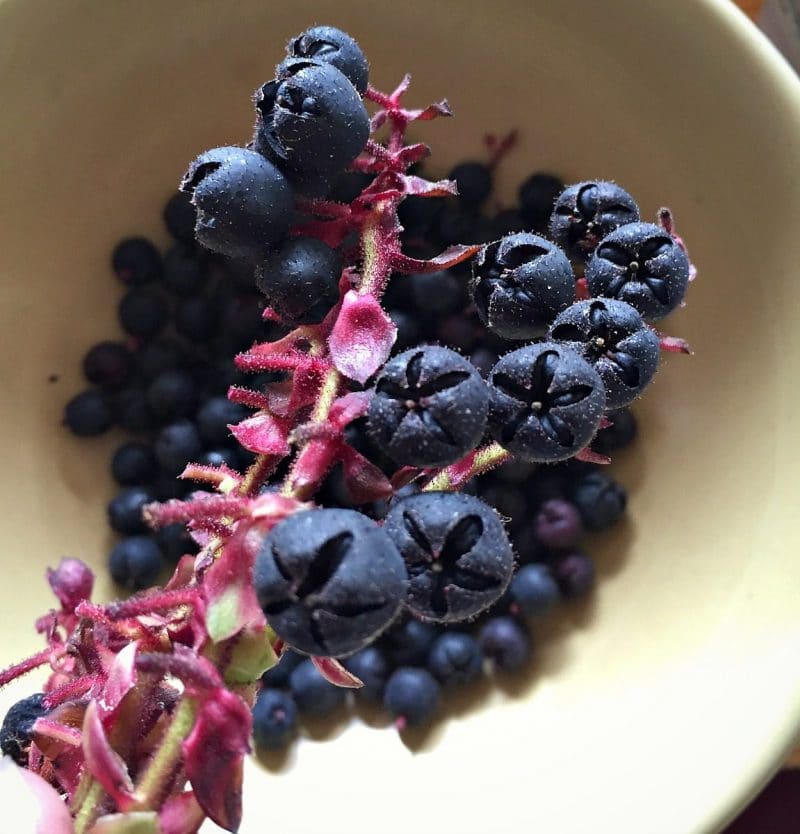
Salal berries have a taste that is similar to blueberries, and the insides look to me like the inside of a fig.
I’ve read some reports that the berries are tasteless, but I haven’t found that to be the case at all. I think they are super tasty, sweet yet mild.
The Salish People traditionally mashed them and dried them into cakes. This may be why they are known as being a good berry for drying and preserving.
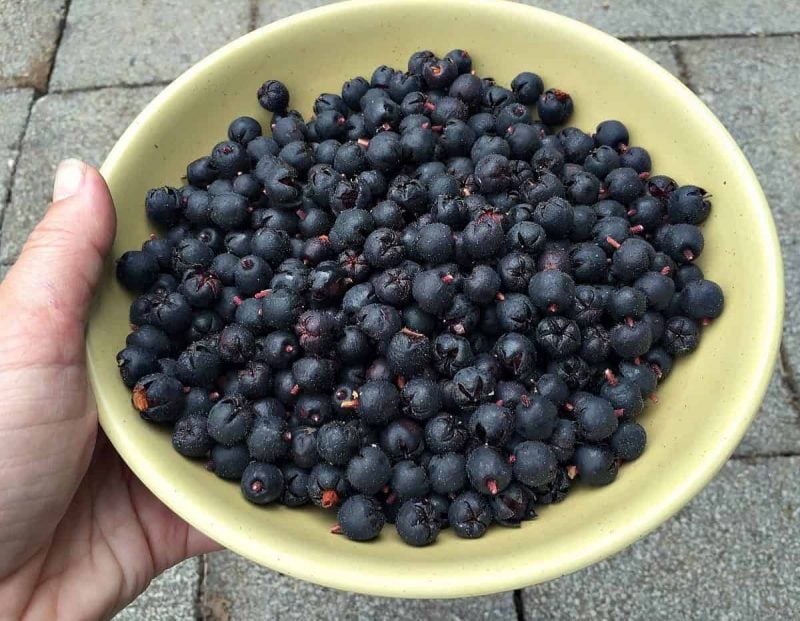
I made an awesome Wild Berry & Nectarine Galette with this salal berry harvest! Here are some more great posts on this amazing berry:
- Salal from Wild Foods and Medicines
- Salal: Food, Medicine, and Culture of the Coast Salish Peoples from Good Food World
- The Unsung Hero: The Salal Berry from Cavewoman Cafe
- Salal Preserves from Fat of the Land
Have you ever foraged for wild edible berries?

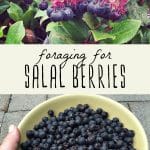

Lots of Salal in my yard and in the undeveloped bush behind my property. time for foraged jam
My experience with leaves from wild plants and culinary herbs is that the aromatic ones lose too much if you dry them. Better to put ’em in the freezer until you want to use them.
As a florist I have used tons of Salal shipped in boxes from North America to Denmark. I never knew it was medicinal or had edible berries. Now I have to get some and see if I can make the root and grow some :D
Salal may not always be tasty out of hand, but it makes excellent jam. Just cover the clean berries with water in a pot and simmer until soft. Add enough fresh lemon juice to the mixture to make it taste noticeably sour. Then remove the mixture,, weigh and add equal weight of white sugar. Return to pot and bring mixture to a full rolling boil that can not be stirred down, stirring constantly so the mixture does not stick to the bottom of the pot. Take off heat and let cool a little before ladling into clean sterilized jars. Seal and enjoy.
Thank you so much!! Can’t wait to try this recipe!!
You don’t need to add near that much sugar!! The best way I have found to preserve these wonderful berries is to make a very low sugar spread. 24 cups of berries, 1 cup of sugar 3 tablespoons lemon juice and a couple tablespoons of pectin makes an absolutely delicious spread and it tastes like nothing but the berries.
Yes, our Indigenous foods are exploited. Salal berries and leaf are excellent foods.
As we have other bugs eating our vegetalbes I found this site for you that works with natural things. All the best with them, here they hate onions and Tagetes. I make traps of pots with hay were they go in a night. In the morning I bring them to a place in the woods were they can eat what ever they want ;>p http://www.planetnatural.com/pest-problem-solver/garden-pests/squash-bug-control/
Having lived in Washington we’ve always had a lot of salal growing but I didn’t find the berries to be that tasty. Maybe it varies by patch. Of course that’s the same with huckleberries as well – sometimes they don’t taste great, sometimes they do.
Such beautiful berries!